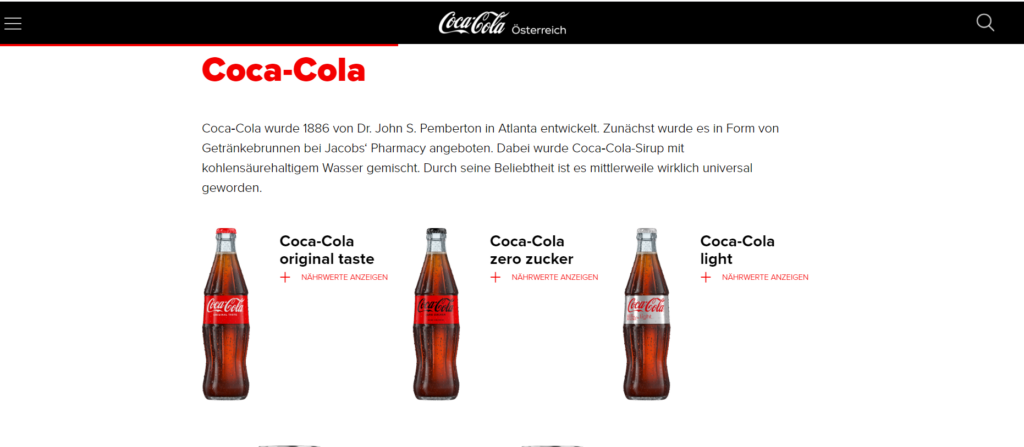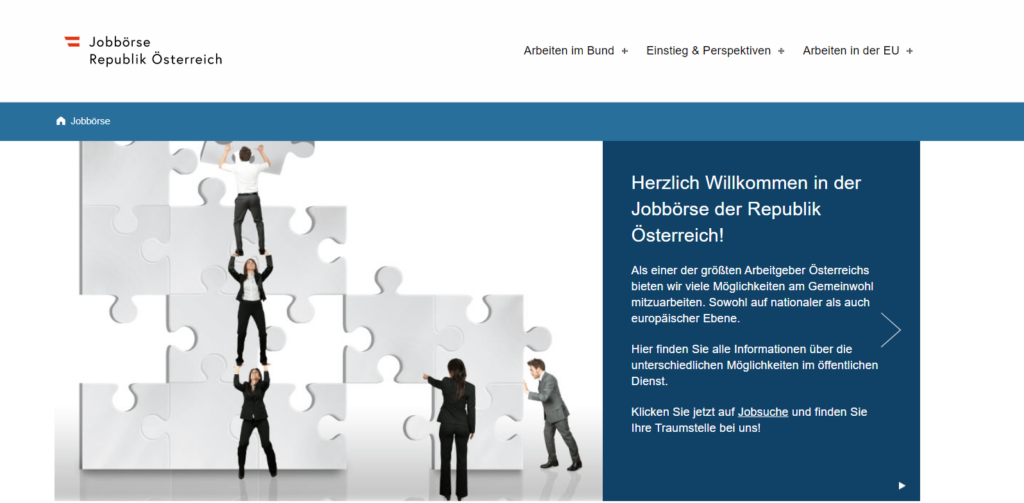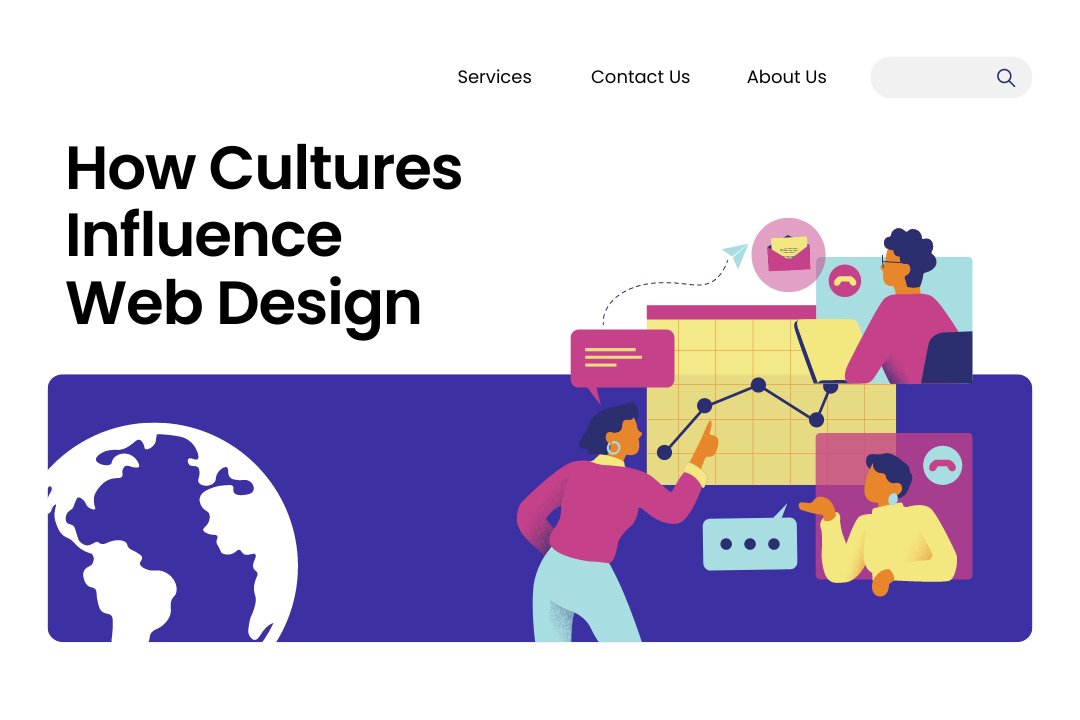It is well known that people behave differently depending on their cultural values. In the era of globalization and greater international job opportunities, businesses seeking expansion abroad are increasingly recognizing the importance of adapting UX design to diverse cultures. It is no longer adequate to merely translate website material into several languages. Meeting the needs of your audience will be difficult if cross-cultural user experience design is not taken into account.
Why Consider Culture For Web Design?
Everyone in the technological world cares about pixel accuracy and testing websites across devices. We frequently need to be reminded to develop products that are culturally sensitive to the target market. Even the smallest elements like icons can make a big difference when adapted to the principles of cross-cultural web design in 2024. Before diving into the crucial aspects of cross-cultural user experience design. Let’s uncover its two main concepts.
What Is Design?
Design is all about building the aesthetic part of the website and its usability. It refers to the planning and layout of elements in an image with the help of design tools like Adobe XD, Sketch, Photoshop, Illustrator, etc. Web designers work on the appearance and layout of the website. In order to attract visitors, make the website user-friendly, and align with the website’s identity, it is important that the correct images, colors, and fonts be used. Understanding the human vision is essential for creating the experience that the visitors are searching for. Only after creating a compelling design, your website will convert.
What Is Culture?
Culture is the characteristics and knowledge of a particular group of people who share the same language, traditions, religion, cuisine, art, and music. According to G. Hofstede, culture is the collective programming of the mind, which distinguishes one category of people from another. It encompasses shared behavior patterns, interactions, and cognitive understanding learned by socialization.
Cultural Influence In Web Design 2024
Does culture affect the processes of design? The way people perceive the interface of your website varies from country to country. Even though two neighboring countries may have similar elements in their cultures, identifying all the differences is crucial for cross-cultural user experience design.
Let’s take the example of the Guugu Yimithirr, the group of people living in Australia. They use cardinal directions in their speech. Instead of saying “Turn right,” they would say “Turn east”. Would the commonly accepted digital wayfinding systems make sense for cultures like this? Shouldn’t we adapt the button “Scroll down” to these kinds of differences for them?
Cultural Dimensions And UX
Nowadays, UI/UX designers should know that culture influences an individual’s perception of usability. Although it may seem obvious many of them fall victim to the way of thinking that all website visitors have the same cultural background. Even the most successful designer can fail to create user-friendly designs if they don’t have a particular culture in mind.
Being aware of the importance of cross-cultural UX design is great, but how should a UX designer research cultural differences and similarities? Professor Geert Hofstede introduced 6 aspects related to cultural differences:
Power Distance
The relationship between higher-ranking and lower-ranking individuals. It is used to measure the acceptance of power between individuals, the effects, and their perceptions.
Individualism/Collectivism
Individualism emphasizes individual goals and the rights of individuals, while collectivism focuses on group goals.
Masculinity/Femininity
Refers to the distribution of roles between males and females. In a masculine society, these roles overlap less. Men are seen as strong and successful. In feminine societies, the roles overlap.
Uncertainty Avoidance
This dimension demonstrates how well individuals tackle anxiety. In high uncertainty avoidance cultures, people are more conservative. They want their life to be predictable and controlled, while in low UAI cultures, individuals are more relaxed and open.
Long-Term/Short-Term Orientation
Long-term-oriented cultures are pragmatic. In short-term-oriented cultures, people pay attention to principles, and are typically religious and more nationalistic.
Indulgance
High indulgence cultures are more optimistic, emphasize freedom of speech and focus on personal happiness. In low IVR countries, people are more pessimistic and have stricter social norms. Various cultural dimensions should be taken into account when designing a user-friendly website in 2024.
Based on the comprehensive study of Geert Hofstede, Professor Emeritus of Organizational Anthropology and International Management at Maastricht University in the Netherlands, Erin Meyer, the author, and professor at INSEAD Business School, represents a model of 8 scales, where each of them depicts how cultures vary from one extreme to another.
1. Communication
Your UX design should communicate with each of its visitors effectively. One should keep in mind that the ways people communicate differ from culture to culture. In Western countries, communication is explicit, while Asian cultures prefer to convey messages implicitly, like most African and Latin American cultures. Hofstede calls the cultures with explicit communicators low-context, while the ones with implicit communicators are called high-context. To navigate these cultural differences, Meyer advises everyone to become an “agile communicator”.
2. Evaluating
Although all cultures appreciate constructive criticism, how it is given varies across cultures, too. Meyer associates direct negative feedback mostly with low-context cultures, while high-context cultures are associated with indirect negative feedback.
3. Leading
Meyer distinguishes between egalitarian and hierarchical cultures. There are fewer inequalities between individuals in egalitarian cultures like the US, Finland, and Canada. Whereas in hierarchical cultures, the inequality level is higher.
4. Deciding
This dimension shows how people make decisions in a particular culture: through consensus- Consensual, or individually, paying attention to hierarchy- Top-down. According to Meyer, most egalitarian cultures are consensual. However, there are some exceptions. The US is Egalitarian, but when it comes to decision-making, Americans lean towards the Top-down dimension. Germany is more hierarchical but has a Consensual approach. Japan is hierarchical but also super-consensual.
5. Trusting
Meyer states that there are two forms of trust: cognitive trust (task-based) and affective trust (relationship-based). Trust is built via business-related activities in a task-based society: skills and abilities. In a relationship-based culture, trust is built through feelings of emotional closeness, empathy, and friendship.
6. Disagreeing
This scale shows tolerance for open disagreement and views on whether it is likely to become a constructive argument with fruitful results or destroy relationships. Germans, for instance, are open to conflicts and try to solve problems with the help of discussions. Asians, on the other hand, avoid conflict. Open disagreements are perceived as rude and inappropriate.
7. Scheduling
Different cultures treat time differently. This mostly depends on how individuals from a certain culture adhere to a schedule. For instance, Germans adhere to linear time frames. This means Germans appreciate punctuality and approach tasks sequentially, paying attention to the deadlines. Southern Asian cultures don’t follow the time strictly and enjoy working with flexible time frames.
8. Persuading
Meyer distinguishes between 2 types of persuasion: principles-first and applications-first. The first style derives conclusions or facts from general concepts. The second one reaches general conclusions based on factual observations from the real world. Let’s take France and the Netherlands to illustrate the differences of these 2 styles. The latter works on a “quickly get to the point and stick to it”, while France focuses on principles and theoretical ground. Application-first thinkers like to receive practical examples upfront, learning from those examples. On the other hand, principle-first thinkers like practical examples but want to get the essence of the framework before they move on to the application.
Application Of Culture Dimensions For Certain Countries
How can the above-mentioned cultural dimensions and scales be applied in a UI/UX design? We can design unique cross-cultural websites for various cultures with the dimensions and scales in mind. Effective implementation of cross-cultural UX design will not only look attention-grabbing but will also be beneficial for companies aiming to localize their business.
1. High-Power Distance vs Low-Power Distance

In order to grasp the differences of UX design across cultures let’s have a look at the “about us” page of 2 different websites: the University of London and the Chinese University of Hong Kong.


What differences do you see here? The main feature of the Chinese web page is a photo and a welcome message by the Vice-chancellor and President of the university. This web page reflects the willingness of Chinese people to accept a difference in power.
Here we can see the elements of hierarchical culture when more respect is shown to an authority figure. In contrast to the high-power distance culture, Britain has low-power distance characteristics. The web page does not show the authorities of the university. It is neutral with a balanced use of information about students and staff.
Based on the main characteristics of this cultural dimension, one should include these elements when creating a UX design across different cultures:
High Power Distance
- More information about the hierarchy of the organization, the owner of the website, or the administration
- Welcome speech from owners of the website, rector of the university, head of the organization, etc.
- Formal logos and certificates
- Symbolic emphasis on social and national order
- Systems with more locked and controlled access sections, visible for other users
- Person biographies,
- Organizational charts
Low Power Distance
- More navigation and control on the website or system
- 24-hour support availability to input feedback (reviews, questioners)
- Podcasts
- RSS
2. High-Context vs Low-Context
An alternative way to create web design apart from power distance is with the help of a communication scale introduced by Meyer. The information displayed on the website can either be explicit or implicit based on the culture.
Broadly speaking, there are two types of cultures in the world: high-context and low-context. The latter communicate through explicit statements, while in high-context cultures communication is layered and sophisticated. Messages are mostly implied instead of clearly stating them.
China, Japan, and most Arabic countries are bright examples of high-context cultures. Scandinavian, German-speaking, and North American countries are low-context. When it comes to cross-cultural web design, the following design tendencies are common in high-context cultures:
Use Of Animation
- Images that demonstrate collectivist society
- Images that show how the products and services are used by individuals
- Many sidebars and menus on web pages
- Use of pictures or symbols to accentuate certain meanings
Let’s look at McDonald’s Thailand and US websites to see the above-mentioned differences:


At first sight, Thailand’s Mcdonald’s website might seem like a mess to the people from the US but it is full of high-context design elements: seven different product boxes, big pictures instead of texts, and community news. When you have a look at the US version, you can see that the website is relatively toned down and looks simpler than the one designed for Thailand.
Let’s compare 2 localized versions of Coca-Cola designed for Colombia and Austria.


The website from Colombia is more complicated. It is full of animated effects, visual images, gifs, and videos. The Austrian version has a tabular layout, with a clear and concise copy. That is another proof that animated effects are more prominent in high-context cultures than in their equivalent low-context websites.
When creating a cross-cultural web design one should consider the viewing patterns of the target audience as well. Individuals from high-context cultures mostly scan the whole page in a non-linear way, while low-context users have sequential reading patterns. Accordingly, the information for high-context cultures can be placed freely on the website, but for low-context users category titles, and navigation items should be clearly identified.
3. Individualism vs Collectivism

For the effective communication of the message of cross-cultural user experience design individualism and collectivism play a great role, too. How does this cultural dimension affect the way websites are designed?
This dimension affects communication and, undoubtedly, has an impact on UX design across different cultures, too.
In a collectivistic culture, people value group efforts. In an individualistic one, people appreciate someone based on their personal and career achievements. These two types of different approaches influence the content demonstrated on the website. For example, in a collectivistic culture having the history of the company on their websites is of utmost importance.
Another example is related to the use of images and illustrations on the website. Individualistic society likes to be presented individually and independently. However, the collectivistic culture prefers representations of groups. Designers for collectivistic target audiences usually depict people in a family context, for instance, having a meal together or playing sports together.
Below you can see two of the most famous job search platforms for Russian and Indian markets. It should be noted that both cultures belong to a collectivistic society. Hence, we may have similar features on the websites.
If we look at the websites we will notice that the pictures favor the representation of groups. Happy smiling faces with an emphasis on good relationships. Such pictures are typical of collectivistic societies. They demonstrate the strong bonds one has with other members of their culture.


In contrast, these are the websites that demonstrate the peculiarities of individualistic cultures. On the German job search websites, we can see how the implemented pictures are either individuals or just graphics. Accordingly, individualistic cultures portray success via the achievement of materialistic goals, freedom, and personal time.


Individuals in collectivistic cultures are also less comfortable when it comes to providing personal information on the Web. One should consider this when designing a website for collectivistic cultures.
This cultural dimension also affects the way people make decisions. In an Individualistic culture, personal desires play a great role when one makes decisions. In a collectivistic culture, people pay attention to trends and general opinions. That’s why having a category of “most popular” on a website will be successful in a collectivistic society.
More elements to consider when designing a cross-cultural website based on this dimension:
Individualism
- The introduction page of websites is considered redundant
- Content with emphasis on a single person’s story and success
- Asymmetric element layout
Collectivism
- Images and group pics from various situations of life with emphasis on history, experience, and tradition
- Functionality to join groups and support (web forums, chats, loyalty programs)
- Localized content
- Elements that represent other people’s opinions, such as popularity charts (for instance, most downloaded mobile apps)
- Feedbacks on products or services
- Introduction page of websites
- Symmetric element layout
Based on this cultural dimension, Meyer developed the cultural scale of trusting and stated that there are 2 types of trust: cognitive and affective. Individualistic cultures are mostly cognitive or task-based. They care more about a person’s skills, abilities, and accomplishments. Collectivistic cultures like China, India, and Japan are known as effective. The design of the website should demonstrate feelings of emotional closeness, friendship, and empathy for effective cultures.
4. Masculinity vs Femininity

Hofstede’s identified masculinity and femininity affect cross-cultural UI UX design, too. Let’s dive deeper into this dimension to explore how it affects the creation of global websites. When you look at the website below, do you think it could be relevant to a feminine or masculine culture?

It may seem that the website represents a feminine culture as there are no specific gender roles emphasized in the picture. But according to Hofstede, Austria is a masculine country. That means people are motivated by precise targets and by being able to show that they achieved them either as a member of a group or as individuals. In the picture, employees work together because they desire to achieve their goals as a group. The sense of such achievements and competition are typical of masculine cultures.
In contrast, we can have a look at some of the most popular Swedish websites for job search:


Sweden is the most feminine culture in the world. The main characteristics of feminine cultures certainly affect Swedish web design. We can notice that the emphasis here is placed on relationships with people over materialistic items.
Based on the main characteristics of this dimension, one can create a cross-cultural user experience design with the following elements:
Feminine:
- Focus on website aesthetics that offer collaboration- adding comments, chatting, joining communities
- Impact on environment
- Images with people
Masculine:
- Focus on competition in various fields
- Demonstration of achievements- financial success stories, annual reports
- Images with objects
5. High Uncertainty Avoidance vs Low Uncertainty Avoidance

When it comes to society’s tolerance of ambiguity or the unknown we deal with the dimension of uncertainty avoidance. Individuals in high uncertainty avoidance cultures prefer to plan everything carefully and rely on traditions. In contrast, low uncertainty avoidance cultures are open to changes and encourage new ideas. How can this dimension affect cross-cultural web design?
Let’s have a look at the websites of a famous fast-food company- KFC:


The first website is the Russian version of KFC. Russia belongs to a high uncertainty culture with a score of 95 out of 120! Based on this, the website has proven design strategies. It includes a standardized layout with a menu bar and the best offers on the top. The visual content is straightforward with price information. The website experience here makes the users feel confident and comfortable. In short, this is a website that demonstrates everything in ONE place.
The second picture is the danish version of a fast-food restaurant. Denmark is a low uncertainty avoidance culture with a score of 23! That means Denmark is open to changes and new ideas. This mindset appears on the website, too. A homepage with colorful and bright images, interesting slogans, and exciting fonts. A homepage with no menu bar?? What else could look weird to the Russian user is the absence of prices and the part where users are encouraged to leave feedback.
It seems that KFC is not the only fast food restaurant that focuses on cross-cultural web design when building their websites for various countries. Below, you can look at the 2 versions of McDonald’s designed for Russian and Danish users. Exactly the same principles are implemented here.

High Uncertainty Avoidance
- Detailed description to boost online purchases
- Preference on secure websites with security policies
- Clear web content with limited choices
- More explanation about website elements
- Simple navigation structures
- Application of colors and animation to keep the browsing experience understandable and clear
- Less uncertain elements (for instance, “people you may know” functionality
Low Uncertainty Avoidance
- Less descriptive content
- More complex navigation structure
- Saturation of elements (for instance, pop-up windows may suddenly open)
- Wide options of selection
6. Long Term vs Short Term Orientation
Here are the main peculiarities of websites based on long-term and short-term orientation.
Long Term Orientation
- Availability of search engines, navigation map
- Frequently asked questions
- History of website
- More content and structure emphasis on the practical value of the product or service
- Several images about a product, its purpose, and how to use it
Short Term Orientation
- Content with an emphasis on truth and fast message delivery
- Single good presentation of product or service (image/video)
Conclusion
Web designers should be sensitive to cultural differences. They should identify all the differences in using design attributes across cultures. Such design attributes are the layout, navigation, colors, texts, and, overall, the visual representation of the website.
If one attribute is acceptable in one country, it could be taboo in another! For instance, adding party pictures to an entertaining website would sound fun to American or European cultures. But would you use the same images to demonstrate the fun parties for the Saudi Arabian culture? You should pay attention to the traditions and beliefs of culture before choosing the pictures on the websites.
Another vivid example of the implementation of UX design across different cultures is the choice of colors. Let’s take white, for instance. It is perceived as a color of peace and purity in Western cultures. It is often associated with weddings and is the color most brides wear. However, in some Eastern and Asian cultures, it is the color of death. In India, white is associated with grief and unhappiness, whereas saffron is the color of purity in this Asian culture.
If you’re still not sure how to design a website that is culturally appropriate and attractive to your target audience, we are here to help you! Contact us, and let’s create a website that drives results globally!

